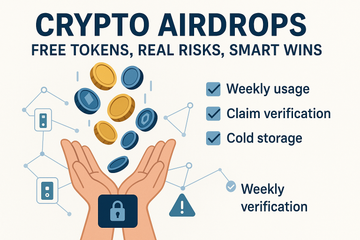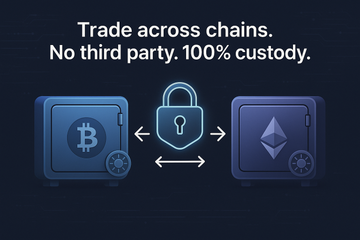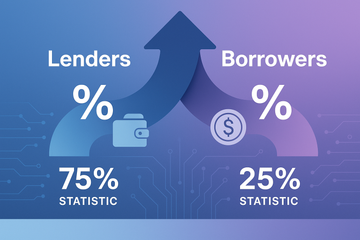Free crypto sounds like a meme until a real airdrop hits your wallet. A crypto airdrop is a marketing campaign where a project delivers free tokens to users who meet simple criteria or who show up at the right time. It is part community reward, part growth hack, and part game. Is it free money? Not quite. It comes with rules, gas, and real security choices. The good news is you can prepare, claim safely, and keep what you earn.
So, how do airdrops actually work?
Most teams take a snapshot of on-chain activity, then publish a claim portal. You connect a wallet, sign a message, and claim tokens with a proof. Sometimes the project sends tokens straight to wallets. Sometimes you stake or delegate to unlock the rest. The mechanics vary, but the core idea stays simple, reward the users who engaged.
- Eligibility: wallets that used the app or bridge within a window.
- Proof: a Merkle claim, a signed message, or a short task.
- Claim window: a start date, a deadline, and a lot of FOMO in between.
- Fees: network gas, which can spike when everyone rushes at once.
You know what? Many of the biggest wins came from routine usage. People who traded weekly or voted in governance often fared better than one-click hunters.
Why projects give away tokens at all
Distribution matters. A token with broad ownership tends to feel fair, and a fair start helps the story. Teams also want liquidity, governance voters, and word of mouth. An airdrop nudges real users to return, try new features, and bring friends. It is marketing with skin in the game. It can also level up network effects; more holders, more talk, more builders.
Recent drops and the mood of the market
We have seen marquee drops across chains. Arbitrum rewarded early bridge users, Optimism rolled out several rounds, and Celestia surprised many modular fans. On Solana, Jupiter’s JUP brought traders back, and Jito turned stakers into loud ambassadors. In 2024, ZKSync and StarkNet shipped long-awaited distributions, while Blast followed its points season with a claim. Some releases felt generous; others, not so much. That mix is normal. Seasons ebb and flow with gas prices, treasury runway, and community patience.
Trends keep shifting. Sybil resistance grew tougher, with heuristics that flag copycat wallets. Tasks lean toward genuine activity, not spam. That means steady use, not noisy scripts. It also means you should keep records, since snapshots can predate the announcement by months. During hype weeks, like big conference weeks or holiday lulls, claim traffic gets chaotic; fees and tempers rise, then cool.
Setting yourself up without losing your mind
Here is the thing, airdrops reward habits, not hype. Pick a few ecosystems you actually like, then use them on a schedule you can keep. Weekly is fine. Small size is fine. Consistency speaks loudly on-chain. Treat it like making Sunday coffee, same time, same calm rhythm.
- Track signals with airdrops.io, CoinGecko’s airdrop pages, DeFiLlama’s lists, and the occasional Nansen or Dune dashboard.
- Bridge carefully; test native bridges first, then try trusted third-party options.
- Try core actions, swap, provide liquidity in small amounts, stake, delegate, vote, mint a simple NFT.
- Record wallet notes, dates, and gas in a spreadsheet; it pays for itself.
- After you claim, move tokens to cold storage and clear allowances with Revoke.cash or Etherscan’s Token Approvals.
One more tip, split activity across a few wallets you actually manage. Do not spam dozens of clones. Big projects run sybil checks, and patterns stand out. Some drops also ask for KYC on claim, so do not create setups you would never complete.
Security first, then everything else
Fake airdrop pages are everywhere, and drainer contracts love the rush. A simple rule saves you, never type a seed phrase. Not on a site, not to a support chat, not ever. Use a hardware wallet when you can. Ledger and Trezor both let you connect to dapps through WalletConnect or browser integrations, and both show what you sign on a secure screen. If a message looks odd, cancel. If a site pushes a surprise approval, cancel.
Claim with a small, clean wallet, then send the tokens to cold storage. Keep spending caps low. Review token approvals often and remove anything you do not need. Turn off blind signing unless a claim flow requires it, then switch it back off once you are done. In Ledger Live and Trezor Suite you can check firmware, label accounts, and add a passphrase for a hidden account. Those small habits prevent big mistakes.
Gas, timing, and avoiding the stampede
Claims often cluster in the first hours. Gas jumps, tempers flare, then fees cool off. Unless the drop is first come, first served, you can wait. Claim during off-peak hours, like late night UTC, and save real money. Keep enough native tokens for fees on the chain you need, whether that is ETH, SOL, TIA, or something niche. If bridging is required, test with tiny sums first, then proceed. During bull weeks, Fridays can be pricey; midweek mornings can feel quiet and cheap.
Taxes are boring, but skipping them is worse
In many places, airdrops count as ordinary income at the fair market value when you receive them. Later, selling can create a separate gain or loss. That is not tax advice, just a reminder to log what arrives and when. Tools like Koinly, CoinTracker, and Accointing help track values and produce reports. A simple note at claim time, price, network, and tx hash, saves you hours in April. If you hold, note the cost basis. If you stake or delegate, keep those records too.
Spot the fakes before they spot you
Real teams link claim pages from their official site, GitHub, or Discord. Scams lean on paid ads, lookalike URLs, and rushy language. If a page asks you to send ETH to receive tokens, walk away. If it requests unlimited approvals on unrelated tokens, close the tab. Beware Telegram bots that DM you claims. Check help from community mods you recognize, and verify links from multiple channels. When in doubt, ask publicly. Scammers avoid sunlight.
Airdrop farming, worth the grind or not?
Here is a mild contradiction. Farming works, and it also wastes time. It depends on your goals, fees, and patience. If you already enjoy trying new apps, your normal flow may qualify you for plenty. If you run dozens of wallets with scripts, you risk bans, and your cost base gets messy. Simple math helps. Add gas and time, assume many projects never drop, and aim for a healthy hit rate, not a perfect one.
Some names keep showing up on watchlists, LayerZero, EigenLayer, Scroll, and a few appchains circling mainnet. None of this is a promise. Treat lists as hints, then use what you like. The best upside tends to land where you would have spent time anyway. Think of it like visiting the same neighborhood café, the regulars get remembered.
A simple playbook you can start this week
Pick ecosystems
Select two or three, maybe Ethereum L2s, Solana, and a modular chain. Add them to your calendar like a workout you will actually do.
Use them weekly
Swap small amounts, stake, delegate, and vote when it appears. Join governance forums, and share feedback that helps. Projects remember useful voices. Keep interactions natural; random, low-value loops look noisy on-chain.
Claim safely
When a drop goes live, verify the link from multiple official sources. Connect with a claim-only wallet through WalletConnect, sign carefully, then transfer to your Ledger or Trezor account for long term storage. Keep a short checklist next to your keyboard, link, amount, fees, post-claim transfer. If something feels off, pause and ask around. Patience pays.
Final thoughts
Free tokens are exciting, but caution keeps them yours. Build steady on-chain habits, write things down, and use hardware for the serious funds. Take your time, and let the stampedes pass you by. Honestly, the calm claimant often does better than the frantic one. And if a friend asks how you keep catching good drops, share the simple truth, you showed up, stayed safe, and stuck around long enough for the network to notice.











